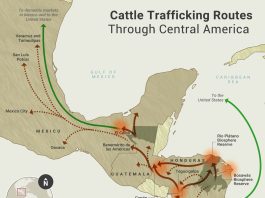
Back in 1998, when I was two years into my research project looking at the best ways to manage goats to build firebreaks and manage vegetation, a fellow Utah State University researcher gave me 35 does because he was done with his own research. To my project partner and I it seemed like the next natural step was to grow our herd even more. We had a nice barn for kidding, and figured that if the babies were born in February, they’d be big enough to head to the field with their moms when grazing season came around. So that fall we bought a Boer buck at the Utah State Fair to breed to our does. He was chosen for his affordable price, and for his long legs and heavy body which we hoped would give us long-legged, fat, brush eaters.

When we started, this is what we knew about where kids come from:
• The buck breeds the doe.
• The doe is pregnant for around 150 days.
• When it’s time, the doe goes into labor, a baby kid pops out and the doe takes care of it. Ta Da!
The good news is that in most cases, that’s really all you need to know. Goats have been successfully doing it for years without us, and there’s a good chance that they’ll keep on doing it. But since this group was technically under my care, I felt like maybe I needed to know a little more. So here are some things I learned that you might appreciate as well.
How do you know if a doe is pregnant?

My first answer to this was, “If she has a baby, I’ll know she was pregnant.” But if you really want to know, you can start by gathering information on whether the doe was mounted by the buck or not. You can sit and watch, or you can get a marking harness for your buck. This consists of some straps to which you attach a “marking crayon.” When the buck mounts the doe, he marks her with the crayon and you know that she was most likely bred.
There are two problems with this method. First, bucks smell bad, and catching one and putting a harness on it means you smell bad too. Second, you need to choose the right crayon hardness. If your buck is with your does when it’s cold, you’ll need a soft crayon, but if it’s hot outside, you’ll want a hard crayon. The first time we caught our buck, we put the harness on upside down, then had to catch him again to re-dress him. Then it was hot, and we had a soft, cold weather crayon. He mounted one doe, and the crayon melted all over them both. Within the hour, all the does and the buck had rubbed against each other until I had an entirely green-tinted herd. As a result I went back to my original method of “if she has a baby, she was pregnant.”
How can I get the most sleep possible during kidding season?
A simple solution to being able to sleep through the night is to feed your does in the evening. They spend the night ruminating and then pop their babies out bright and early in the morning. We learned this from some research papers and from experience. When we fed our 32 does in the evening, all of them delivered between 5:30 and 6:00 in the morning. Since we weren’t sure it would work, we still checked them throughout the day and night. But we learned from our results that this small adjustment made all the difference in the world!
For more on getting good sleep, here’s an article with research results as well:
How to Make Lambing, Kidding and Calving Happen During Daylight Hours
The rest of the questions you have about how to know when a doe might be in trouble and how to help her are answered in the video below. My best advice is to remember that nature knows what she’s doing for the most part so being quiet, calm and relaxed is best for you and your animals.
Want More?
Here are more On Pasture articles about my experiences with goats and health issues.



